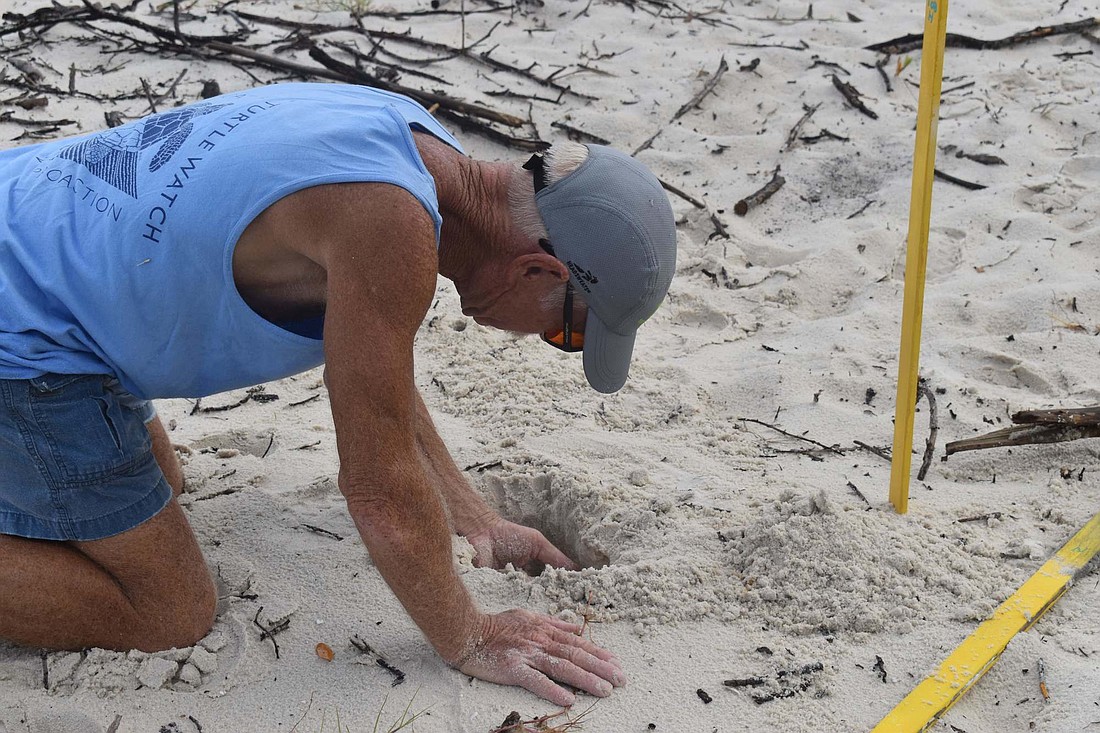- July 26, 2024
-
-
Loading

Loading

The Sarasota area has more turtle nests this year than it has in 38 years of tracking and nesting on the beaches, according to a press release from Mote Marine Laboratory and Aquarium.
This year’s numbers break several records, from total number of nests to turtles tagged to nest numbers from different species, according to the release. Longboat Key alone has 1,326 nests out of the total 5,063 in the Sarasota area, which includes Venice, Siesta Key, Casey Key and Lido Key. Because females nest every two-three years, many of this year’s nesting turtles are thought to be returning from 2016, according to the release.
In a rare turn of events, 28 of those Longboat nests are from the rare and threatened green turtles. More green turtles on local beaches means Mote has more opportunities to learn about the species through tagging. Overall, 468 turtles have been tagged, including seven green turtles. Mote has named six of them, and a contest to name the final one is running until Aug. 9. Click here for more info.
Turtle watchers had been waiting for this record for a while, watching as nest numbers climbed higher than they had at certain points in previous years. According to previous Observer reporting, numbers have been high throughout the season, but now, the broken record is for the entire season — which still goes until Oct. 31.
The Longboat Key Turtle Watch goes out every morning to record nest stats, and at this point in the season there are more hatching than laying, said LBK Turtle Watch President Cyndi Seamon. The record-breaking numbers are great to see, but there are still a lot of disorientations happening, Seamon said. Disorientations happen when turtles follow unnatural lighting, such as porch lights, instead of the moon and head away from the ocean, leading to danger.
As turtle season continues, more nests are likely to pop up even as hatching takes over as the main event, so take care to watch where you walk on the beach, and make sure to cover holes, knock down sandcastles and carry everything you brought back off the beach at the end of the day to make a turtle’s life easier. If you live on the beach, or walk at night, make sure to not use flashlights and make sure others know, as well.